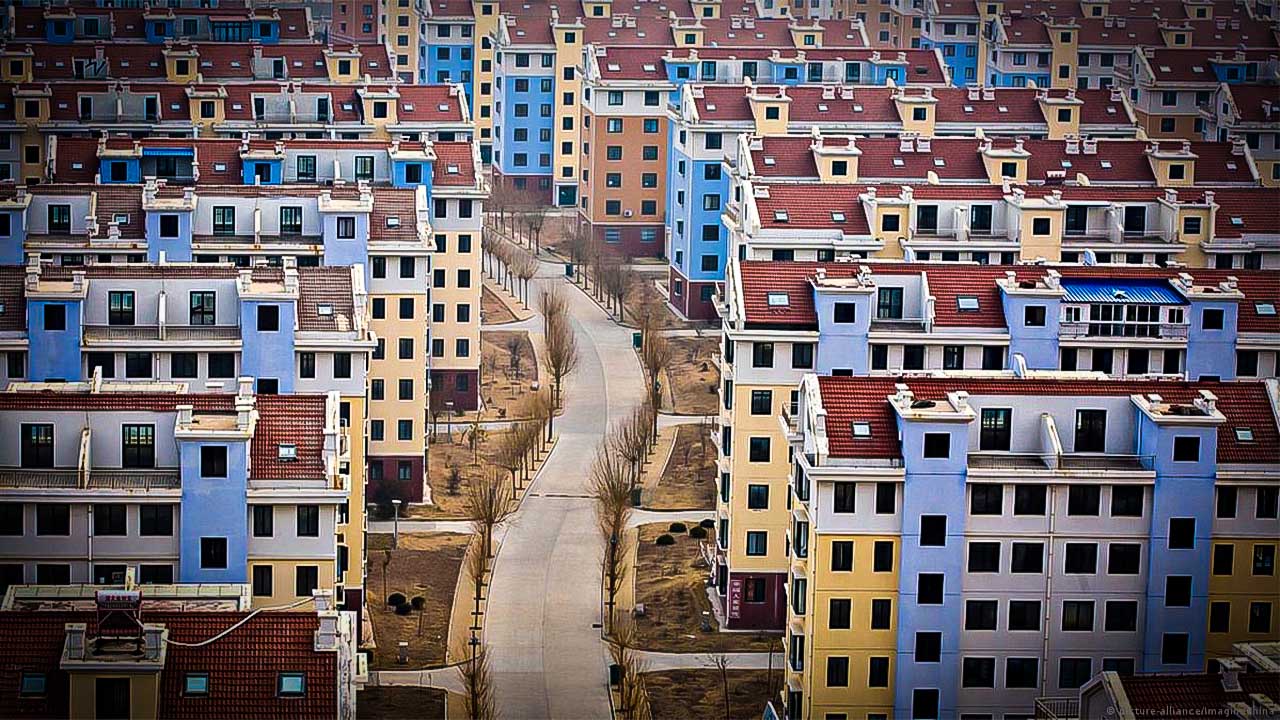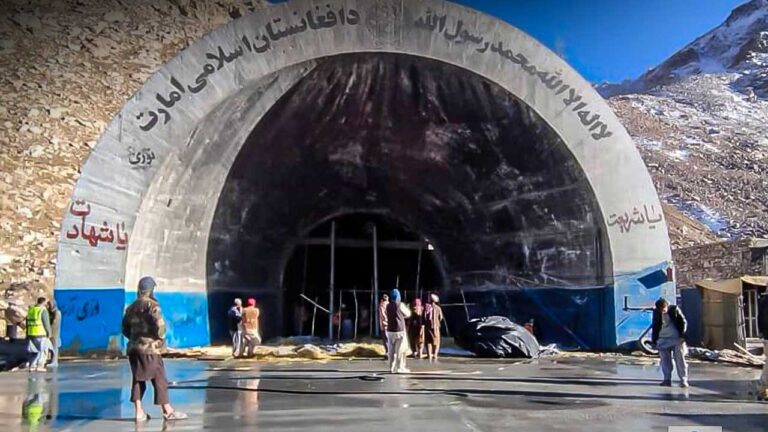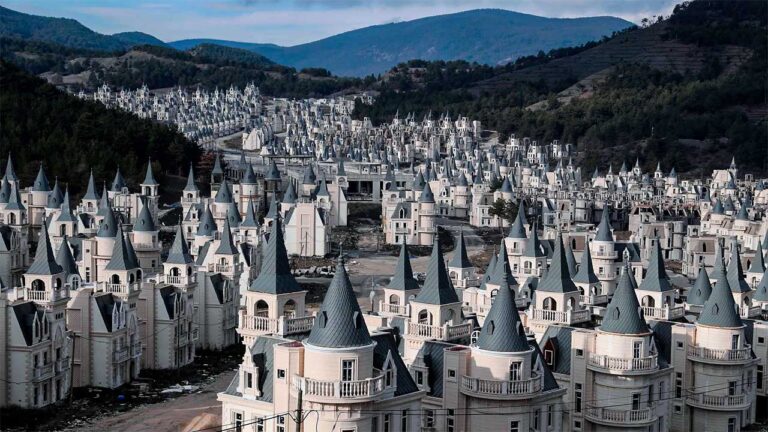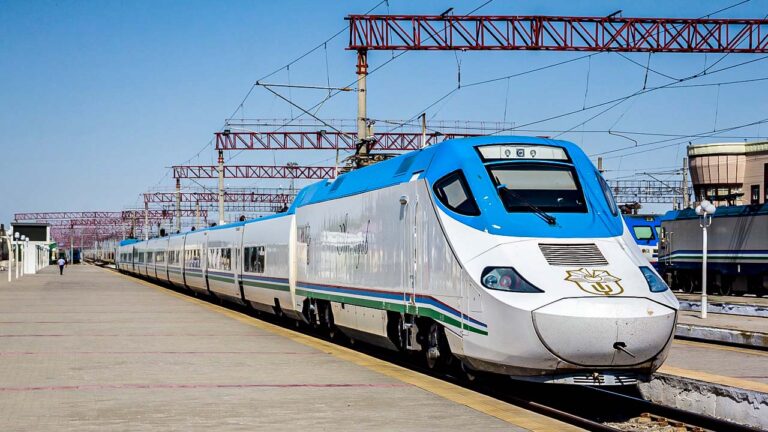Why China is a Home for Ghost Towns
In big cities around the world like London, Paris, and New York, life never seems to slow down. These cities are famous for their constant activity, representing the fast pace of modern life. But can you imagine Paris or Manhattan suddenly being ghost cities – quiet, without the usual noise of busy streets and crowds?
Think about Paris with peaceful streets where you can only hear the sound of your own footsteps. Imagine Manhattan without the loud engines and the rush of people. Along the River Thames in London, where there used to be lots of people, now it’s empty and spooky.
In this different scenario, the usual busy vibe of these famous cities is replaced by a strange calmness. It makes you wonder what life would be like if everything suddenly stopped.
We’re not talking about movies or stories here, but real life. And we’re not just talking about the well-known Western cities; we’re also looking at quieter cities in the East that often get overlooked.
These Eastern ghost cities have their own stories to tell, different from what you might expect. They might not be as famous, but they have their own charm and strength. As we learn more about them, we discover a whole new world of experiences.
Embarking on a journey through the grandeur of China’s most ambitious construction projects, we encounter a curious paradox. These towering marvels, crafted in the heart of a nation pulsating with economic might, stand as silent witnesses to an unspoken mystery. High-rise edifices, echoing Western aesthetics, cast long shadows over deserted streets, where the absence of bustling life hints at a haunting tale. Visitors, drawn by curiosity, ponder the fate of these cities’ inhabitants, wondering if they vanished into the ether not long ago. What veiled truths lie beneath this eerie emptiness? Join us as we unravel the enigma shrouding these silent metropolises in today’s captivating story.
Also Read: Silvertown Tunnel: London’s $2.8 Billion Controversial Megaproject
In the intricate web of opinions surrounding China’s construction ventures, a prevailing belief endures: each project is celebrated as an unmatched triumph. However, interwoven within this narrative are strands of truth, where a handful of endeavors serve as stark reminders of the delicate nature of ambition. Amidst the chorus of achievements, these projects surface as cautionary tales, carving out their spot in the history of global construction not for their successes, but for their colossal failures.
In the ever-evolving landscape of global construction, major firms often unveil groundbreaking projects that capture the world’s imagination. Yet, amid this rich fabric of innovation, China stands as a beacon of exemplary engineering prowess. Our focus shifts to the eastern province of Zhejiang, where an extraordinary endeavor unfolds—not merely a building, but an entire city dubbed the “Paris of China” Enter Tianducheng, a mesmerizing replica where strolling through its streets evokes the ambiance of Paris itself. From the majestic silhouette of the Eiffel Tower to the iconic charm of the Champs-Élysées, every facet of French architecture is meticulously recreated, transporting visitors to the enchanting streets of Paris.
Located near the bustling metropolis of Shanghai, this city was meticulously designed to accommodate 10,000 souls, with aspirations for 10% occupancy by the year 2021. However, its striking resemblance to Paris has elevated the cost of living to staggering heights, rendering it a distant dream for many.
Nestled in the verdant embrace of southern Yunnan province, Kunming emerges as a sprawling canvas of beauty in the heart of China. Its skyline, a mesmerizing blend of ancient charm and contemporary marvels, paints a picture of timeless allure. Yet, in the chronicles of 2021, Kunming’s story took an unexpected turn, captivating the world’s gaze. Fifteen towering sentinels, poised in anticipation of completion for years, bowed to the ground in a symphony of demolition, leaving behind whispers of intrigue and wonder.
Like a tale woven with threads of ambition and adversity, the project embarked upon in 2011 faced a formidable obstacle when its developers were compelled to cease construction in 2013 under the weight of insurmountable debt. Evergrande, a renowned Chinese construction titan, embarked on a project to erect high-rise edifices for 65,000 residents, only to falter as the company’s total debt soared beyond $300 billion. Today, this once bustling enclave of skyscrapers stands deserted, its streets silent, and its markets, schools, and hospitals hauntingly reminiscent of a ghost city.
Furthermore, numerous projects of this nature have become a source of concern for policymakers in China. Due to restrictions on outbound investment for Chinese citizens, purchasing property domestically is a popular choice for securing savings. Reflecting this trend, over 50 prominent construction companies in China persist in developing residential projects catering to various socioeconomic classes.
Also Read: The $42BN Plan to Rebuild the Entire Christchurch City from Scratch
As of now, China boasts a staggering 65 million unoccupied residential units, yet perhaps nothing epitomizes irony more than the sight of 260 opulent European-style villas, originally intended for the elite, now serving as abodes for livestock. Within the unfinished grandeur of these palaces, cattle leisurely wander, a stark reminder of unfulfilled ambitions. In a puzzling turn of events, the renowned and largest construction behemoth, Greenland Group, abruptly ceased operations on the State Guest Mansion project in Shenyang, the vibrant heart of northeastern Liaoning Province, after merely two years, leaving behind a void of unanswered questions.
In July 2023, Greenland found itself in default on international bonds exceeding $400 million. Despite the Shanghai Government holding a significant stake, Greenland couldn’t evade the upheaval engulfing the Chinese property market.
To this day, these lavish villas remain incomplete, their intended opulence replaced by a scene of stark contrast. Local farmers now cultivate the land meant for meticulously groomed gardens, once reserved for the affluent and well-connected. Meanwhile, feral dogs roam the grounds, overseeing makeshift poultry pens and double garages hastily repurposed to store hay bales and farming implements.
In the suburbs of Shanghai, Thames Town is a picturesque destination meticulously crafted in the likeness of London. Adorned with Tudor-style architecture, the town features a Harry Potter statue, a homage to Winston Churchill, iconic red phone booths, fish & chips chops, English pubs, and security guards donning traditional British uniforms.
However, as you stroll through the town, the resemblance to Piccadilly Circus is far from exact. Many of the streets are desolate, lined with shuttered shops. Originally intended for students and university staff, Thames Town failed to attract its target demographic due to prohibitive pricing. With property owners unwilling to adjust their rates, Thames Town now resembles scenes from a post-apocalyptic zombie movie.
There is also a ghost city that’s slowly awakening from its slumber. Chenggong, situated in the southern Yunnan province as a part of Kunming, has long been shrouded in the eerie quiet of abandonment. Yet today, it pulsates with life. The metamorphosis of Chenggong began in 2003, as fields and alleys gave way to grand structures and thoroughfares. By 2013, a city stood where no inhabitants were prepared to dwell. However, today Chenggong is only deserted during winter holidays, having been repurposed into student accommodation, serving seven colleges. This transformation has breathed new vitality into Chenggong, altering its fate. While not as densely populated as a metropolis, the trend of residing here is gradually gaining momentum. Streets are now adorned with bustling roadside shops and markets, while the air resonates with the chatter of youthful vibrancy.
Though information on ghost cities in china remains limited, studies have pinpointed approximately 50 municipalities, ranging in size, often dubbed as development zones, new districts, or eco-cities that have transformed into ghost cities across the country. Situated predominantly on the fringes of second and third-tier Chinese cities, many of these projects are fully constructed, while others were halted midway through development. Their presence epitomizes China’s rampant overdevelopment in real estate and the nation’s heavy reliance on housing as an investment vehicle.
In China, real estate has long been regarded as a secure investment choice. However, the widespread emergence of such properties throughout the nation has prompted individuals to reassess this perception. Nowadays, real estate is increasingly perceived as one of the least dependable investment avenues, presenting a significant challenge for China’s government and policymakers.







